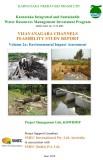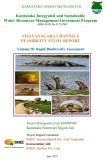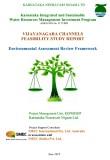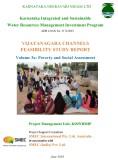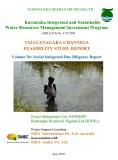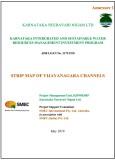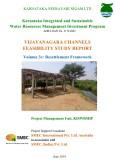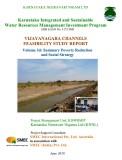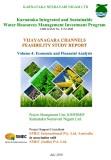Vijayanagara Channel (VNC) System is a run-of-the-river irrigation channel system built during the Vijayanagara Empire more than 600 years ago. Originally consisting of 19 channels, one channel (Rampura) caters to the irrigation needs of the neighboring state of Andhra Pradesh. Among the rest 18 channels that serve the command area in Karnataka, Bennur Channel is in ruins, while Koregal Channel command receives water from the Tungabhadra Left Bank Channel. The VNC was constructed within the Tungabhadra basin in the reach starting from the Tungabhadra reservoir in Koppal District. Within the State, the VNC system spread across 3 districts, namely, Bellary, Raichur and Koppal and lies between latitude 14°30' to 16°34' N and longitude 75°40' to 77°35' E.
The modernization (rehabilitation) program under Karnataka Integrated and Sustainable Water Resources Management Investment Program (KISWRMIP) assisted by Asian Development Bank (ADB) comprises modernization (rehabilitation) of three Projects-Gondi, VNC and TLBC initially under two tranches. The Gondi modernization under Project 1 has begun in July 2015 and has been completed by 31 December 2019. The Tranche 2 comprises modernization (rehabilitation) of Vijayanagara Channels. Modernization and total automation of Tungabhadra Left Bank Canal is to be taken up as a separate project. The multi-tranche facility for the two tranches will be closing in the year 2024.
There are three outputs for each of these projects including VNC:
- Output 1: State and Basin Institutions Strengthened for IWRM;
- Output 2: Irrigation System Infrastructure and Management Modernized, and
- Output 3: Project and Management Systems Operational.
VNC modernization aims at improving water use efficiency in the Culturable Command Area (CCA) of 11,154 ha. Along with modernization (rehabilitation) works, installation of flow measurement and telemetry, command area development works, strengthening asset management and main system, Operation & Maintenance (O&M), and institutional strengthening and capacity building of WUCS will be taken up.
The scope of VNC modernization includes rehabilitation of 12 anicuts, 215.31 km of canal sections and other appurtenant structures. The program aims at enhancing water security through modernization of existing irrigation projects/schemes, improved water resources management and other associated infrastructure activities in select river basins.
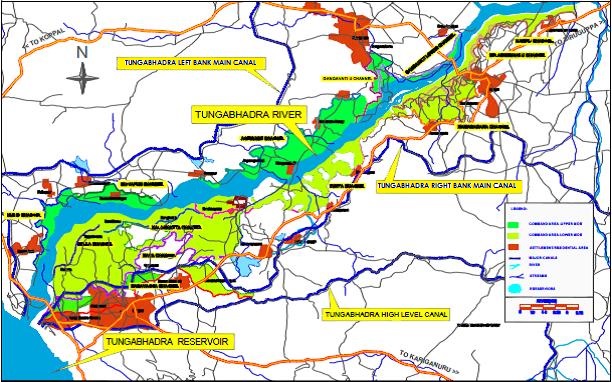
Salient features of the Vijayanagara Channels
| Right bank of TB River | ||||
S.No |
Name of the Channel |
District |
Length in Kms |
Command Area in Ha |
| 1 | Raya | Vijayanagara | 27.74 | 2226 |
| 2 | Basavanna | Vijayanagara | 16.5 | 1240 |
| 3 | Bella | Vijayanagara | 5.5 | 600 |
| 4 | Kalaghatta | Vijayanagara | 7.02 | 237 |
| 5 | Turtha | Vijayanagara | 18.69 | 931 |
| 6 | Ramasagara | Bellary | 15.5 | 673 |
| 7 | Kampli | Bellary | 23.55 | 620 |
| 8 | Belagodahal | Bellary | 11.22 | 210 |
| 9 | Deshanuru | Bellary | 9.03 | 478 |
| 10 | Siruguppa | Bellary | 10.85 | 764 |
| Left bank of TB River | ||||
| 11 | Huligi | Koppala | 10.69 | 265 |
| 12 | Shivapura | Koppala | 6.54 | 403 |
| 13 | Anegundi | Koppala | 19.44 | 789 |
| 14 | Gangavathi Upper | Koppala | 9 | 775 |
| 15 | Gangavathi Lower | Koppala | 9.54 | 667 |
| 16 | Bichali | Raichur | 14.5 | 276 |
Total |
11154 | |||
